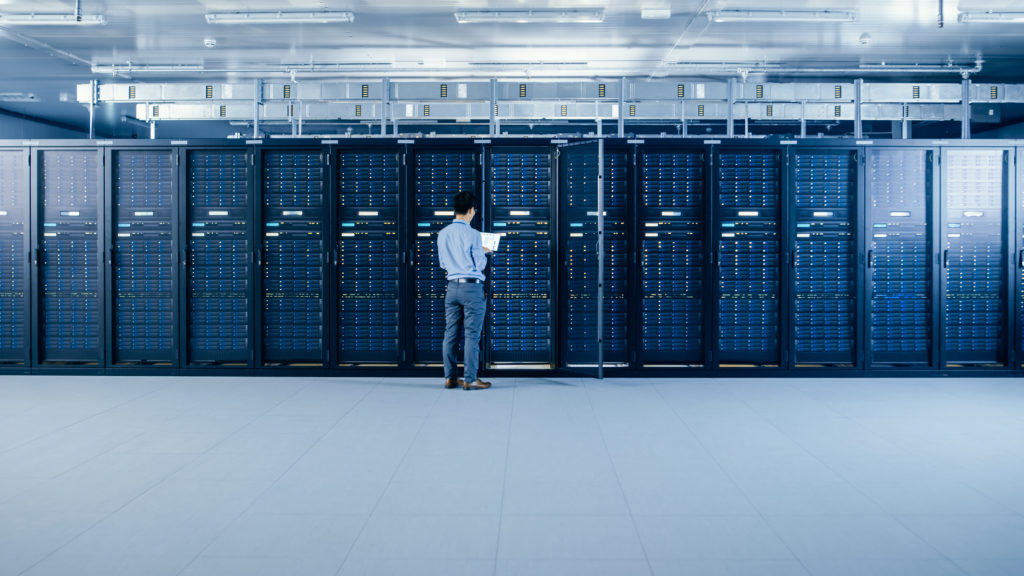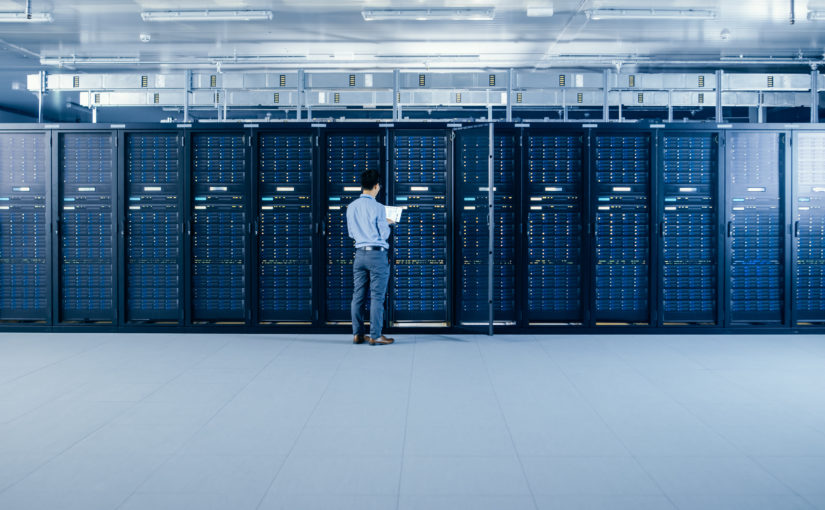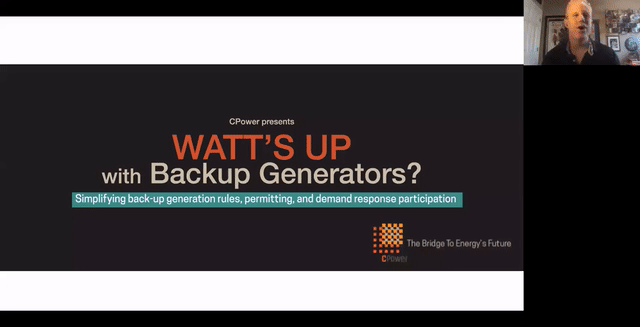Seasonal Readiness 2024
Report: Demand response is critical to enabling the energy transition and ensuring a reliable grid

Recently released research shows that mounting reliability risks make demand response (DR) increasingly important as the grid transforms. An aging grid dominated by solar and wind power, battered by storms and fires and struggling to supply new needs like EVs and electric heat pumps, needs the flexibility that DR provides.
“Paradigms for the generation and delivery of electricity are evolving away from a centralized network with predictable power flows toward a distributed and dynamic grid, creating many challenges and opportunities for utilities and other entities involved in the electricity value chain,” according to a new report about grid reliability challenges published by Wood Mackenzie and CPower. “At the heart of these changes is how reliability is assured when the grid is most stressed, like when customer demand peaks during heat waves, natural disasters or extreme weather events.”
Based on insights from analysts at Wood Mackenzie, the report shows that DR programs have proven to be an important resource for ensuring reliability amidst grid challenges in the past, but that such support may not always be available. Analysts explain how low capacity pricing and cumbersome rules on DR participation threaten the future of DR programs and the ability to use distributed energy resources (DERs) to help the grid.
If energy users were to stop participating in DR, analysts note, utilities and grid operators would lose their most reliable resource during emergencies as well as a resource that can provide much-needed flexibility year-round.
Such year-round flexibility is imperative because the proliferation of intermittent renewable resources, the retirement of fossil-fuel generators, and the electrification of vehicles, heating and other key energy needs are straining the grid, making it difficult to balance supply and demand.
“As the grid’s needs continue to evolve, particularly with the growth of other types of distributed energy resources (DERs) besides DR, such as solar generation, battery storage, and electric vehicles, DR is an increasingly important part of the resource stack in energy markets,” according to the report from Wood Mackenzie and CPower.
The North American Reliability Corp. recently issued a similar warning about the importance of flexibility in mitigating risks to grid reliability.
“System operators and planners should ensure that sufficiently flexible ramping/balancing capacity is available to meet the needs of changing patterns of variability and new characteristics of system performance. In future decades, growing storage and demand-side flexibility may help mitigate the concerns for flexibility and attention will turn to multi-day energy concerns, but intraday flexibility remains important during this transition,” according to NERC’s 2023 Electric Reliability Organization (ERO) Reliability Risks Priorities Report.
Today’s tech-enabled DR can play a key role in energy, ancillary services and other flexibility markets. But policymakers must eliminate barriers like unsustainably low pricing and unworkable administrative complexities to unlock the full flexibility of DERs, according to Wood Mackenzie and CPower’s report. To do so, the paper’s authors suggest market reforms such as revising compensation methods for DR resources, fixing capacity accreditation and introducing a price floor for DR.
If you would like to learn more about the research and recommendations from Wood Mackenzie and CPower, you can download a copy of the report here: Ensuring Grid Reliability with DERs.
Kenneth Schisler
Ken leads CPower’s regulatory and government affairs team, having previously served in similar roles at both Vicinity Energy and EnerNOC/Enel. He brings nearly three decades of policy leadership on innovation in clean and advanced energy technologies and collaborates with public officials, regulators, power exchange and system operators, academia and industry peers to unleash the potential of demand-side resources.
Seasonal Readiness 2023
Seasonal Readiness 2022
Data Centers Have the Grid’s Answer for the Fourth “D”

Much has been made in the energy industry during recent years of the “3 Ds,” the macro trends of digitization, decentralization, and decarbonization that have driven the electric grid’s transformation toward a cleaner, more dependable, and efficient future.
The 3 Ds are generally considered to be positive trends rooted in good intentions for the grid and society.
There is, however, a fourth “D” that has been nothing short of a costly troublemaker for the grid since its inception and threatens to undermine every good deed the original 3Ds seek to accomplish.
“Disruption” has been the grid’s ever nemesis since Thomas Edison fired up electricity’s first electric grid in 1882 at Pearl Street Station in lower Manhattan. Like any arch-villain, disruption has a knack of showing up at the most inconvenient of times, particularly when the grid is already vulnerable.
Consider the most disruptive grid events of the last decade. Most were weather-related and resulted in blackouts.
Actually, we don’t have to flip too far in the history book for evidence of weather-related disruption pushing the grid to the brink of total failure. The tragedy this past February in Texas when record winter temperatures forced the ERCOT grid to suffer its first blackouts in a decade is a prime example of disruption’s wicked handiwork.
The California blackouts in August of 2020 that took place during an extreme heatwave in the western US are another example and prove that disruption doesn’t partake in an offseason.
Unfortunately for the grid, disruption is a devil that takes many forms. The COVID pandemic is a prime example.
The lockdowns during 2020 led to electric loads shifting from commercial buildings to residential, which caused grids across the US to work overtime to ensure electric supply and demand remained in balance.
Like death and taxes, disruption may very well be an inevitable fate for the grid. Yet throughout history, fate has had a way of swinging favor back toward the good guys.
Demand response, the practice by which organizations are financially rewarded for shifting load from the grid during times of stress, is a case in point.
We’ve previously written how demand response has been in the US electric grid’s defense arsenal for decades. Today, with the proliferation of distributed energy resources (DERs) adding to that arsenal, demand response has proven to be an even greater thwart to grid disruption than ever before.
Data Centers, with their penchant for owning on-site DERs such as backup generators and energy storage, are in a prime position to participate in demand response and help the grid fend off disruption when the last (or any) of the 4 Ds rears its ugly head.
Across the country, an increasing number of data center organizations are realizing how helping the grid pays immeasurable dividends for their local communities.
During February’s grid collapse in Texas–which tragically resulted in hundreds of citizens losing their lives–data centers proved to be the local heroes.
Data centers participating in demand response programs provided flexible energy resources at the critical times when the ERCOT grid needed them. These resources played an integral role in keeping the grid from a total collapse, which ERCOT has stated was minutes away and would have kept much of the Lone Star State in the dark and freezing for weeks.
For their helping the ERCOT grid, these Texas data centers earned a substantial demand response revenue payment. But it’s their stewardship of community sustainability that should be noted and applauded. Fortunately for data centers, sustainability recognition for demand response participation is starting to garner measurable notice.
Demand response and all forms of demand-side energy management allow the grid to continue its transition from a fossil-fuel-dominated past to a renewable energy future.
Disruption, be it of the foul weather variety or some other adversarial pill will be waiting in lie around every bend of our journey to energy’s future. Within their sophisticated suite of behind-the-meter energy assets, data centers have the antidote to disruption’s poison.
The modern world relies on data centers’ megabytes. The grid and local communities nationwide are counting on data centers megawatts.
To learn more about how data centers can help the grid, reduce their carbon footprint, and improve their local communities’ sustainability, download CPower’s latest ebook: “A New Age of Demand-Side Energy Management.”
SOTM 2021 Webinar Series
Seasonal Readiness 2021
Arizona’s Largest Utility Ramps its Demand Response program to Pursue Carbon-Free Mission
The largest electric utility in Arizona is making strides toward a more sustainable future and it’s clear demand response is part of the plan.
Arizona Public Service (APS) is the owner and operator of the country’s largest producer of carbon-free electricity–the Palo Verde Generating Station.
Currently, the utility generates clean, reliable electricity for 1.3 million homes and businesses in 11 of Arizona’s 15 counties and boasts a current energy fuel mix that is 50 percent clean.
50 percent clean energy in 2021 is impressive enough, but APS CEO Jeff Guldner sees an even cleaner future and has pledged to cease all coal-fired generation in the APS service territory by 2031 and for the utility’s fuel mix to be 100 percent carbon-free by 2050.
To get there, APS plans to call on a generation portfolio that is 45 percent renewable in just nine years.
To help bridge the present and future, APS is counting on its own Peak Solutions demand response program to ensure its grid remains reliable when stressed with heavy electrical demand.
Launched in 2010, the Peak Solutions program engages commercial and industrial customers in voluntary energy conservation measures when demand for energy peaks on APS’s system, particularly during Arizona’s scorching summers.
The program also helps maintain lower-cost power for all customers.
As APS ramps up its drive to a carbon-free future, they’re also ramping up their demand response program and the financial rewards participating commercial and industrial organizations will earn for voluntarily reducing their electricity consumption when the demand on the APS grid is high.
The APS Peak Solutions aims to include participants both small and large evidenced by its minimum load commitment of just 10 kW instead of the more customary 50 kW minimum required by most commercial demand response programs in the US.
By not having any penalties for non-performance, another atypical demand response program parameter, APS is further making Peak Solutions attractive to organizations who have never before participated in demand response.
APS’s CEO Jeff Guldner knows that plans and programs aren’t enough to attain a sustainable future in Arizona. “Achieving and realizing the full benefits of a completely clean energy mix will take partnership,” he said in APS’s published clean energy commitment document, “It’s something for all of us, by all of us.”
To learn more about demand response and the APS Peak Solutions program, click here.
Demand-Side 2021 Webinar Series
Watt’s Up With Backup Generators?

Simplifying back-up generation rules, permitting, and demand response participation.
Renewables are here and continue to displace traditional coal resources on the grid. Battery storage is compelling and becoming more cost-effective — but it is still not a full-proof, scalable solution. Utilities are battling the challenges of grid intermittency amidst infrastructure challenges to support renewable penetration. All of this to say, the tried-and-true back-up generator is still the go-to resource when it comes to energy resilience and still remains a misunderstood energy resource.
Join CPower’s back up generation and demand response experts Arusyak Ghukasyan and Michael Mindell for this 30-minute panel to learn and understand topics including:
- How generators can earn revenue for your organization
- The rules and policies for BUGs at the federal, state, and local level
- Common myths about using BUGs for ‘non-emergency’ situations like demand response and testing under load
- What industries, markets, and programs are more favorable to BUGs for revenue
- How to fund and finance generator upgrades or replacements










